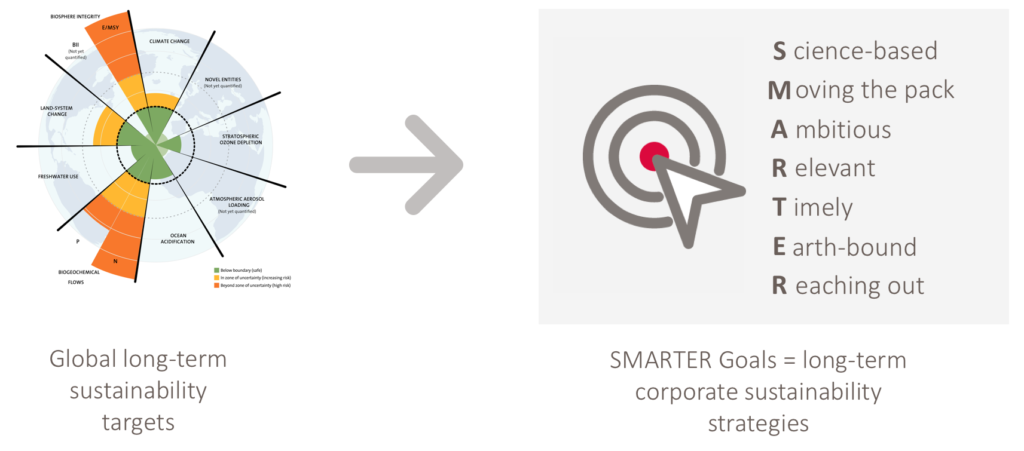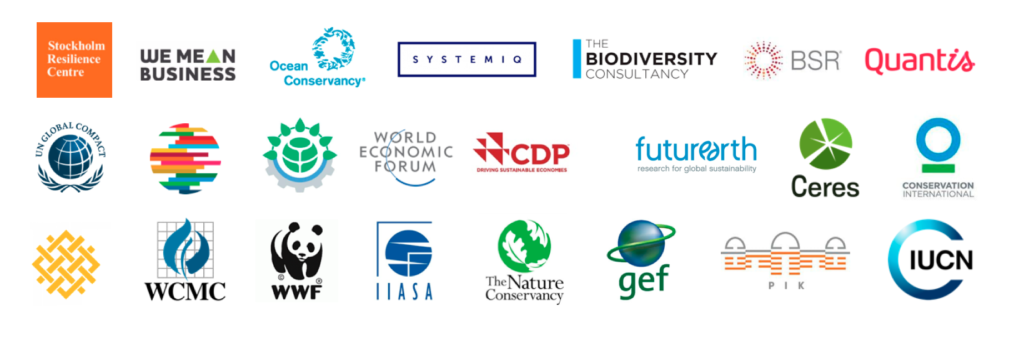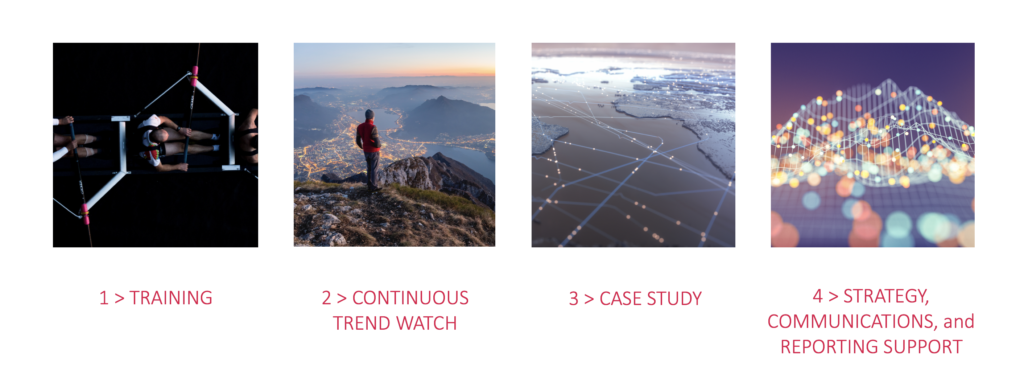It’s an exciting time for science-based goals as more than 500 global companies have committed to align their GHG targets with what science says is necessary. Forward-looking businesses understand that having a carbon climate strategy is only one dimension of a holistic approach to environmental sustainability, and that even climate change is impacted by many other factors beyond carbon (including biodiversity, land, water, etc). In webinar 3 of our Ready > Set > Go Beyond! science-based goal-setting series, Quantis, CDP, and the Science-Based Targets Network look at exciting developments in science-based goals on other planetary boundaries and explore how trailblazing companies are getting ready to > Go Beyond! carbon. Here are some key takeaways.

It’s a world where companies don’t have sustainability goals but goals to be sustainable. That’s the shift to Absolute Sustainability.
Companies shift toward Absolute Sustainability + Planetary Boundaries
In an age of growing environmental pressures, companies looking to future-proof their business have started to shift their approach to environmental goal-setting. We call it the Absolute Sustainability mindset. Instead of setting relative sustainability targets for incremental improvements, companies look to science to understand what level of ambition is necessary to be sustainable within the limits of the planet.
To understand these limits, scientists have used the framework of planetary boundaries, a construct originally developed by 28 renowned scientists led by Johan Rockström from the Stockholm Resilience Center. The planetary boundaries framework helps us to understand the processes that regulate the stability and resilience of the Earth system and demonstrates the range within which humanity can continue to thrive. In essence, planetary boundaries provide the foundation for corporate-level science-based goals. At Quantis, we call these “SMARTER” goals – goals that go beyond what is perceived as achievable to something ambitious, goals that are timely rather than time-bound, goals that are Earth-bound and reaching out.
We need to Apply Absolute Sustainability concepts to corporate level

Let’s take the example of carbon. The planetary boundary for climate change is determined by the IPCC. This group of leading scientists have set a threshold (1.5° by 2100). From there, we can calculate the amount of emissions that can be sent into the atmosphere before the threshold is reached (the carrying capacity). Finally, we can compare that to the current level of emissions to determine the necessary reduction path for the planet and for a company.
Translating the planetary boundary into corporate-level goals is precisely what the Science Based Targets initiative has done. And it’s been a game-changer for corporate climate strategies. (For a deep dive into climate SBTs, check out webinar 2: > Set goals aligned with science and build your climate action plan.)
The science on other planetary boundaries is still being developed, and momentum on science-based corporate targets for other environmental issues is building in tandem. Companies themselves have already started to take important steps beyond carbon, using frameworks like CDP’s contextual water targets, for instance.
CDP’s Contextual Water Targets set the stage
Unlike carbon that can be managed globally, most other environmental dimensions need to be managed at a different scale and time frame. Water, for instance, requires local, catchment-level action. CDP and 5 partner organizations have been developing guidance to set more meaningful and impactful corporate water targets. Christina Copeland, Senior Manager, Water Security at CDP explains how companies should “set water targets that reflect the operating conditions at the catchment-scale in order to reduce their water risks, realize opportunities, and contribute to overall water security and sustainability” not only for the company but for all stakeholders. This guidance on contextual water targets will be a starting point for developing a science-based methodology for water targets.
>> To better understand contextual water targets, check out Christina Copeland’s presentation in the webinar or download the webinar slides.
The Science-Based Targets Network
Water is not the only critical environmental issue needing attention. Each planetary boundary is incredibly complex. And there are still gaps in the science on these issues. Like the IPCC for climate science, a scientific collective known as the Earth Commission has been established to work on other environmental issues. And to translate the science into corporate-level goals, that’s where the Science-Based Targets Network (SBTN) has stepped in. The SBTN launched 18 months ago and is now a coalition of 27 organizations (as of March 2019) – primarily NGOs and think tanks with expertise in specific planetary boundaries. The purpose of the SBTN is to facilitate, organize, and share knowledge on methodologies that translate the science of planetary boundaries into corporate targets.

The SBTN sees the Science-Based Targets initiative as a “proven concept that is ripe for replication.” Next up after climate are science-based targets on water, land, biodiversity, and oceans. As an active member of the SBTN, Quantis is proud to contribute our expertise on how to apply the latest science and methodology to business.
Actions your company can implement now to > GO BEYOND
With new science-based target frameworks on the horizon, our corporate partners have asked us how they can get ready for these new developments. We recommend these 4 key actions:
1 > Build knowledge and engage your team on the topic of absolute sustainability
2 > Stay informed on the latest developments
3 > Test available methodologies (through case studies & pilot projects)
4 > Assess the data + reporting you have and understand the gaps
With these actions in mind, we’ve designed a set of services to build capacity in organizations committed to work towards corporate targets aligned with planetary boundaries. It’s called The Absolute Sustainability Commitment, or TASC.
The Absolute Sustainability Commitment

TASC was created to build corporate knowledge and prepare the shift needed to move towards Absolute Sustainability, to open a feedback loop between businesses and international organizations & experts, and to spark a shift on how businesses set targets to be truly sustainable.
You’re invited to join the innovative companies working together to build a sustainable world. It’s a world where companies don’t have sustainability goals but goals to be sustainable. That’s the shift to Absolute Sustainability – asking what’s necessary for the planet and how we align and transform our business models.
Contact Quantis’ Planetary Boundaries Lead Marcial Vargas-Gonzalez to learn more about TASC and explore how your company can get ready to > Go Beyond.
